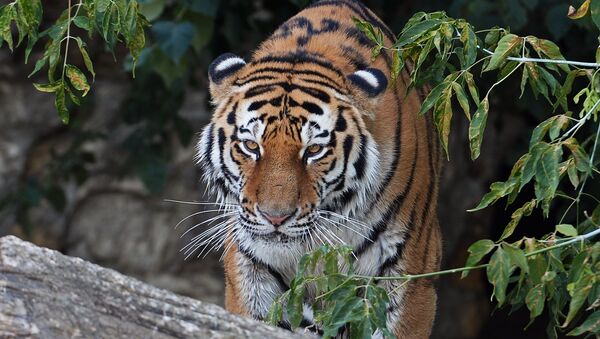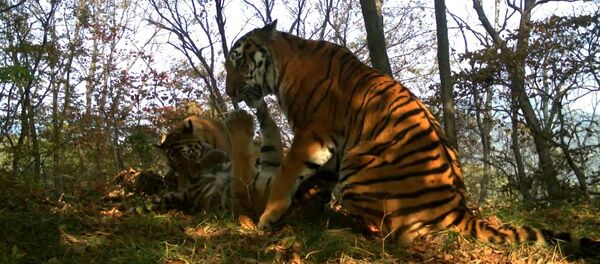VLADIVOSTOK (Sputnik) – On July 29, the world celebrates the International Tiger Day.
Population
"According to the census of 2015, as well as the information which the experts receive annually via the trail cameras, the population of [the Siberian tiger] is stable at around 550 animals," the director of the Far East branch of the Amur Tiger Center NGO, Sergei Aramilev, said in an interview with Sputnik.
"If the trends revealed in 2015, such as the habitat expansion and the population increase in certain areas, will stay in place, the population may grow by 100-150 individuals [by next census in 2020]," Aramilev pointed out.
Aramilev pointed out that the measures aimed at protecting the Amur leopard, being carried out by experts, would also benefit the living conditions of the Siberian tiger.
Threat of Far East Economic Rise to Siberian Tiger
"The mechanisms are needed to negate the harmful effect of the territories’ economic development. For example, the timely resolution of human–tiger conflicts … The government is right to create special groups for the resolution of such conflicts – the experts [working there] scare the predators off and teach people how to breed animals within a tiger habitat," Aramilev pointed out.
Measures to Reduce Poaching
"It is necessary to reorient residents from 'robbing' the forest to farming and collecting the non-wood products of the forest. It is a long process where the governmental participation is necessary," Aramilev added.
Among other measures to prevent poaching, the expert called the increase in the hunting control services’ financing as well as the establishment of the animals protection authority and the attraction of specialists to it.
"The work of the hunting control service has already yielded the results. People are already getting used to taking the documents with them when they go hunting because the documents can be checked," Aramilev noted.
From Forest to City
Aramilev also dismissed the widespread opinion that the Siberian tigers have been coming out of the forest to the inhabited areas more often recently.
"Tigers do not come out more often. The fact is that almost everyone has photo or video devices, so all the encounters with these animals are filmed and eventually get to the media," the expert explained.
Aramilev added that in the 1990s, the population of the Siberian tiger was smaller so people have not met the tigers often. Also, today more and more people use the transport allowing them to reach the remote areas, that is where people meet the Siberian tigers too, the expert noted.




